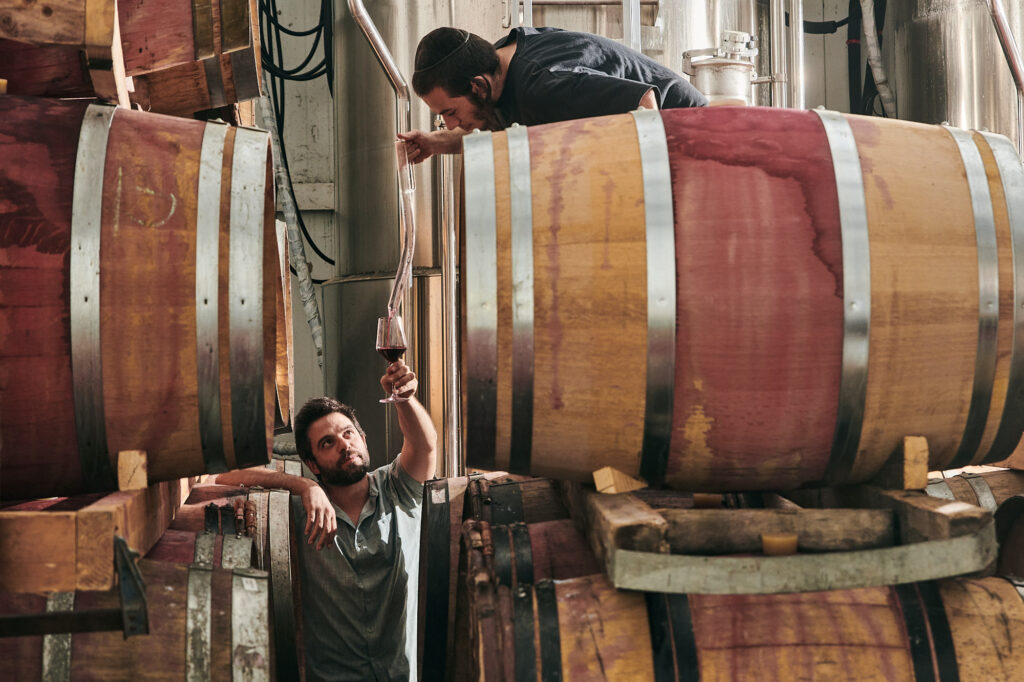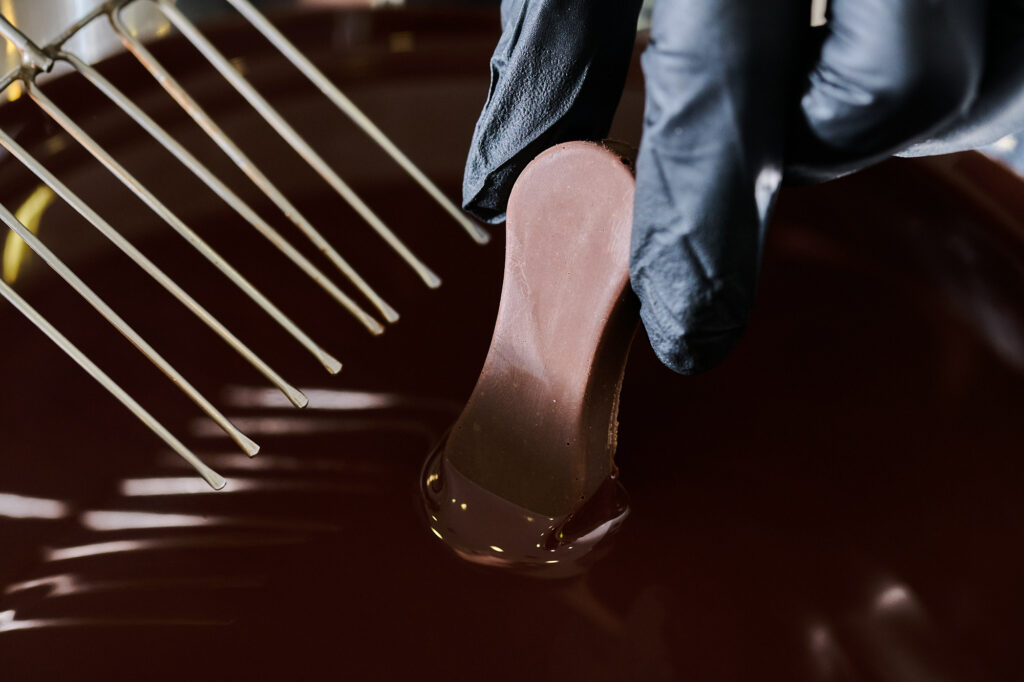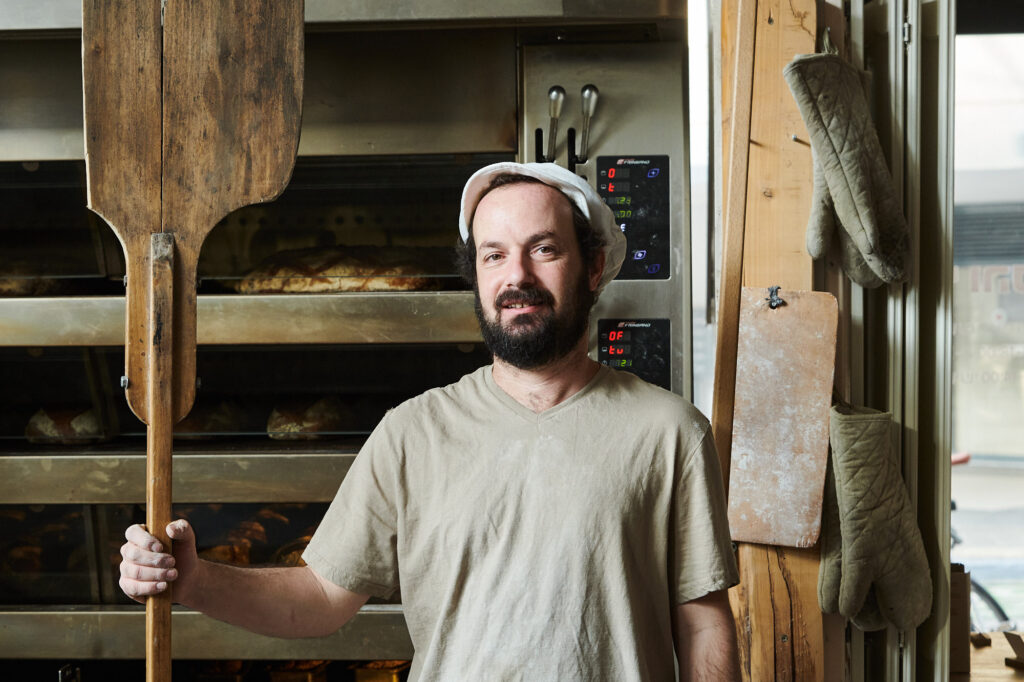
The goal of the Asif gallery is to contribute to the local culinary conversation through collaborations between culinary professionals and artists, artisans, and researchers from various disciplines. The exhibitions investigate the interplay between food, history, anthropology, art, and more. Our current exhibition “Crafting Flavor” (curated by Michal Evyatar and Carmel Bar), traces the creation of local flavors through tools, sounds, techniques, and traditions.
28 Lilienblum St, Tel Aviv-Yafo. Sunday-Thursday 9:00-17:00, and Friday 9:00-15:00.
Crafting Flavor
Are winemaking, baking, or shaping delicate ma’amoul crafts like any other? As we assembled The Flavor Mosaic — a collection of places chosen by culinary experts that reflect Israel’s food culture — we came across dozens of skilled craftspeople. Their experience spans thousands of hours of weighting, kneading, cutting, mixing, and more.
With their hands they learned, taught others, and helped shape Israel’s culinary culture. They also use tools like a bread peel and ma’amoul pincher as an extension of their hands. These tools and others are displayed in the “Crafting Flavor” exhibition.
From the exhibition
Curators’ Text: Michal Evyatar and Carmel Bar (Melafood Studio)
Tradition and innovation, local flavors and global influences, creative freedom and the constraints of the market — the convergence of these factors has given rise to a new Israeli kitchen.
Every time a chef opens a restaurant in Jerusalem or by the sea, a baker experiments with a new flour, or a farmer plants a new crop in the desert or beside the mountains, a layer is added to our food culture.
Mastery of these culinary professionals comes from thousands of hours of working in fields, wineries, kitchens, bakeries, distilleries, and beyond. Like all craftspeople, their hands are often rough or scarred, but they hold wisdom. They chop, crush, and knead with precision, then lovingly serve the fruits of their labor. Hands encapsulate the movement of creation.
The utensils on display here express the human wish to transcend the body’s limits; combined with ingredients, tradition, and technique, they produce the final product. The photographs take us into the kitchen, where everything comes together. All these elements are assembled to form a celebration of Israel’s culinary mosaic today.
In “The Flavor Mosaic,” a special project launched by Asif in April 2024, culinary experts selected the places that best capture Israel’s current food culture. These restaurants, stands, wineries, distilleries, farms, and bakeries, embody the essence of this place.
Hamachleva Dairy, Kibbutz Givat Haim (Ihud)
The stick used at Hamachleva Dairy to stretch mozzarella is readily available at any hardware store. However, crafting exquisite mozzarella demands considerable skill. The process involves inserting the stick into the cheese curd, lifting it to shoulder height, and repeatedly stretching until long, flexible strips of mozzarella take shape. While strength is essential for working with the stick, caution is equally crucial to avoid burns from the nearly boiling water that softens the curd.
Balinjera, Tel Aviv-Jaffa
A sifet is a round woven straw basket imported from Ethiopia. Fanta Prada, the owner of Balinjera, uses them to remove the injeras from the pan and let the flatbreads cool. She rotates through three sifets to prevent the injeras from sticking to each other before stacking them up.
Agur Winery, Ella Valley
The tool used at Agur Winery to taste wine from the barrel is aptly named a wine thief as it ‘steals’ a taste from the barrel, pouring it directly into the glass. The glass tube traps the wine by creating a vacuum when the upper opening is blocked with a thumb. Removing the thumb allows the wine to be released into the glass.
Olla Pizza, Isfiya
This mortar and pestle is used by Amin and Olla Allo from Olla Pizza to grind spices for their salumi seasoning. They dry the garlic and onion in the oven before combining them with black pepper and a few secret ingredients. The grinding process demands both strength and precision, a sort of meticulous dance between hand, tool, and spices.
Luna Bistro, Nazareth
The ma’amul pincher intricately seals and shapes shortbread dough with around 40 delicate pinches per cookie. Luna Zreik, the owner of Luna Bistro, inherited her pincher from her mother and explains that its style is unique to Nazareth.
Amnon Bukhari Bakery, Tel Aviv-Jaffa
The bread stamp used at Amnon Bukhari Bakery creates a centerpiece decoration on the large, round traditional Bukharian bread. Using the stamp demands precision in order to imprint the flower pattern delicately onto the dough before it is adhered to the oven walls for baking.
Ika, Tel Aviv-Jaffa
Chocolatier Ika Cohen relies on her dipping fork for various tasks, from coating pralines to crafting intricate decorations. This tool stands as the chocolatier’s most crucial instrument, functioning as an extension of their hand. The way they hold it reflects their unique personal signature.
Reshta, Ein Rafa
Crafted in Hebron from local soil, this vessel is perfectly sized for an individual serving of meat. At Reshta, Ranam Barhod seals it with dough before placing it in the oven and then serving. As the diner cuts through the dough, the rich aromas of the lamb stew waft from the dish.
Al Kalha, Tel Aviv-Jaffa
Owner of Al Kalha, Ahmed “Zizo” Khattab, fills a falafel scoop with an onion and pine nuts mixture unique to Kuwaiti cuisine. Each falafel ball is released into the boiling oil with a gentle push from the left thumb.
Hagay Bread, Tel Aviv-Jaffa
A decade ago, baker Hagay Ben-Yehuda from Hagay Bread received a wooden peel as a gift from a carpenter friend. Despite advancements in baking technology, this trusty peel remains essential for extracting bread stuck deep in the oven. Due to the peel’s considerable length, anyone working around the baker has to be mindful and avoid getting caught in its path.











